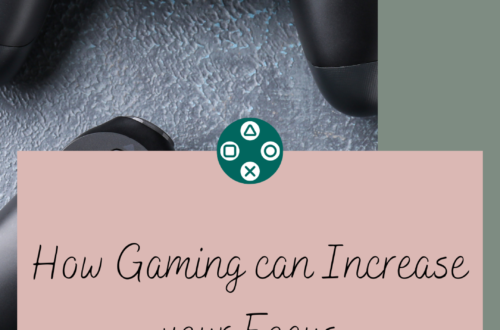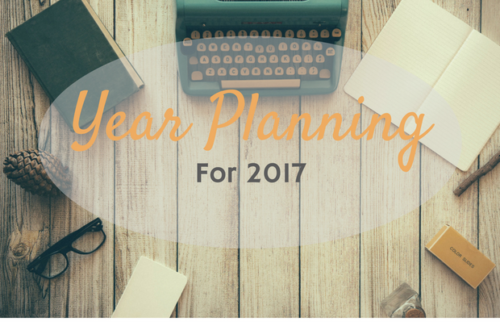
Bullet Journaling: Part 1 – Getting Started and Preparation
How Bullet Journaling Started
Ryder Carroll started the Bullet Journal Method in 2007 after he saw a friends desk full of post it notes, scraps of paper and notebooks. He asked if he could share his method with her and she agreed. When he met her to go over his method, she told him, he should share his method with the world. When he created a website on August 18, 2013 about his bullet journal method, it took off like a rocket. Ryder’s system for staying organized while staying mindful was getting the attention of so many. Ryder later published his book The Bullet Journal Method in 2018 for the world to learn about how his Bullet Journal Method could help others. The Bullet Journal Method helps you accomplish more by focusing on what is meaningful in your life and taking out was is meaningless. Now lets get into Bullet Journaling – Getting Started and Preparation.
Materials

Notebooks
Choosing a notebook or journal can be a difficult task depending on the type you want to use. You want thicker pages because having your pages tear when you are erasing is probably one of the most annoying things ever. Also if you are going to get creative and use watercolors or thick inked markers, you are going to want thicker paper so it doesn’t bleed through onto your other pages.
There are several different forms of journals. You can use a blank journal with nothing on the pages. You can use a lined journal if most of your layouts will be writing, You can use grid or dot journals for a little more guidance and structure. Most prefer the grid or dot journals compared to the blank or lined, but you might find you like one of those better and that’s ok. Use what you are most comfortable with.

Handwriting
Handwriting isn’t that important in your Bullet Journal as long as you can read your own handwriting. Trust me I have had those days. Writing so fast that you can’t read what you just wrote a few minutes ago, it can get very frustrating. Make sure you can read what you write. You can keep it simple like Masha from Masha Plans Bullet Journaling to Happiness or you can be creative like Shelby from LittleCoffeFox. Both have great ideas and fabulous layouts. You can also look on our Pinterest page for more ideas.

Drawing Utensils
Minimalist will often just use a ballpoint or fountain pen for their journals, but if you want to be creative the options are endless. Markers, Pens, Colored Pencils, Charcoal, Pastels, Watercolors, the list could go on and on. The best thing to do is to test them all out first before you use them in your bullet journal to make sure they write smooth and don’t bleed through your pages. Tombow, Midliner, and Fineliner are most popular for Bullet journals, along with ballpoint and brush pens. You can even use Crayola markers and they will work great. I love using colored pencils when I color, Midliners for highlights, Tombow Brush pens for handlettering, Gel pens for decoration and a Fineliner for outlining. I also like using watercolor pens and calligraphy pens for creative writing and colors.
Creative Utensil
Bullet Journals can be as creative or as simple as you like. Using stamps, stickers, stencils, washi tape and scrap paper can really liven up your bullet journal. Stickers, stamps and washi tape can add flair and style to your bullet journal and stencils help keep things neat and precise. Scrap paper can give a more junk journal feel without looking like a junk journal. It depends on how you want your bullet journal to look. The design process is all up to you.

Rapid Logging
Ryder Carroll developed rapid logging to help organize our lives without using traditional journal writing that is lengthy and time-intensive. No matter if it is for home, school, work or business, rapid logging can help you organize your schedule of events, tasks and notes throughout your day.
Rapid Logging will help you efficiently capture your life as it happens so that you may begin to study it.
– Ryder Carroll
Traditional Vs Rapid Logging
Traditional journals are very lengthy, which there is absolutely nothing wrong with if you are one who likes to write, and write in detail. Rapid logging takes that same information and cuts it down so it’s not so lengthy and time consuming to write. If you’re in a meeting, it’s not conducive to write out all the little details. You don’t have time for it. That is where rapid logging comes in.
For example:
Traditional: “Jenny volunteered to run the bake sale for the Children’s Hospital Fundraiser for Cancer Research.”
Rapid Logging:
○ C.H. Fund. – Cancer Research
· Bake Sale
– Jenny Vol.
* Types if bullet points will be discussed in the next section
With Rapid Logging you only capture the important information and leave all the unnecessary information out it. Smaller concise information, rather than long lengthy text. Also make sure your information has a clear topic, such as “shopping list”, but if it’s for meeting notes or conference details, make sure you are more specific so you can find it in your index easier, such as 12/27 MON (Month/Date/Day), Board Mtg. (Event Name) , C.H. Fund. (Project Name). So you know the date, event, and project discussed so you can easily find your notes and go back to them for reference when you need too.

Bullets
We use bullets to capture our thoughts into short, objective sentences. Each bullet has a unique symbol to categorize your entries. It takes less time and helps keep your information in short sentences and forces you to filter out only the important information. Effective bullets are a balance between short concise sentences and the charity of your information. Making sure the information is not to short or to long and make sure you have all the important information.
Example:
“Email Product Manager” is too short, you don’t know which product manager, if it’s urgent and needs to be done sooner rather than later or why you are calling them. If you write “Email Becky, the Product Manager for Evanston Children’s Hospital about the bake sale fundraiser on May 30th,” it is too long. “Email Becky (P.M.), re: Bake Sale Fund – May 30.” This is more concise and you’re using less words.
Traditional Rapid Logging has three categories:
- Tasks – Things you have to do
- Events – Your Experiences
- Notes – Information you don’t want to forget
Tasks
Tasks are represented with a dot, although you can use a check box, star, heart or any other shape to signify your tasks. a dot is just easier and more efficient while writing. If you use a template or a stencil, you can use whatever shape you would like. You don’t have to stay with the traditional dot if you want to be more creative. Some people even color code their categories to make it more eye catching.
- Tasks – Entries that require action.
X Completed Tasks
> Migrated Tasks – tasks that have been moved forward to another day or another month
< Scheduled Tasks – a task with a specific date that falls outside the current month, moved backward to the future log.
Irrelevant Tasks– tasks that are no long relevant or don’t need to complete.
Events
Events are represented with a z”○” bullet, to represent important events “Mom’s Retirement Party” or events that already occurred “Got Promoted, Yay!”. Make sure you document the events as soon as possible so you don’t forget, whether they are happy, joyful experiences or sad, painful one. It helps to loo back and reflect on your experiences weather good or bad. Scheduled events that have specific dates can be scheduled in your future log, which we will discuss in the next post. If you like journal writing, you can put note bullets under your event bullet for more information on the event.
Notes
Notes are represented with a “-” dash bullet, which include facts, ideas or thoughts you have to record. Keep track of information you want to remember, such as meetings or classroom notes. When taking notes, be precise and only write the important information, don’t make it lengthy or you will loose valuable information along the way. Being short and precise with your information helps you listen more on what is being said in the meeting and less time capturing the information word for word. When your meeting is done, let the information sink in so you can process it all. This gives you the time to recapture anything you missed.
Signifiers and Custom Bullets
Signifiers or Custom Bullets are tasks, events or notes that need extra context, so when you are scanning your notes it stands out and is easier to find.
* represents Priority Tasks – remember to use these sparingly. In the words of Ryder Carroll, If everything is a priority, nothing is.
! represents Inspiration Notes – Great notes or insights won’t be missed.
Custom bullets help you capture entries that are individual to you and your situation. For example, putting a forward slash on a bullet can signify that the task was assigned to someone else. After the person has completed the task, you can put a backward slash over it to mark it complete. You can also use other signifiers to represent recurring events like volleyball practice. You could use a “V” for Volleyball or a “P” for practice, or if you have a board meeting once a month you could use “B” for Board or “M” for meeting, if it helps you stay organized and productive. Try to keep signifiers and custom bullets to a minimum, the more you have the harder it is to keep track of them all.
Now that we have gone through the supplies and rapid logging, make sure you get your materials ready for the next blog post when we discuss Index, Keys, and Logs!







No Comments
Pingback:
Pingback:
Pingback:
Pingback:
Pingback:
Pingback:
Pingback:
Pingback:
Pingback:
Pingback:
Pingback:
Pingback:
Pingback: